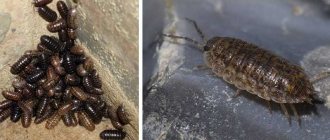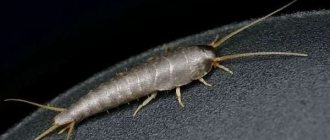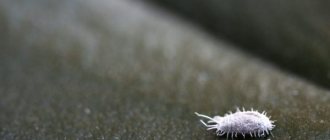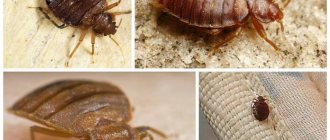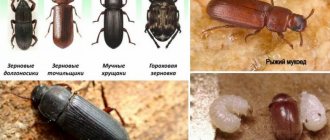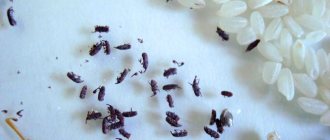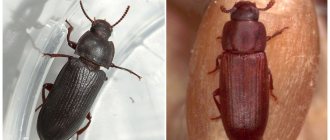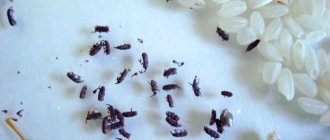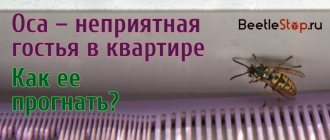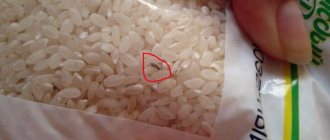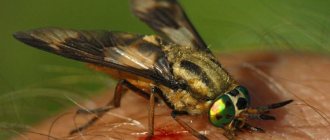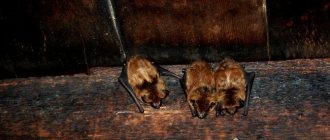37627 0 15
Andrey August 7, 2016Specialization: facade finishing, interior finishing, construction of dachas, garages. Experience of an amateur gardener and gardener. We also have experience in repairing cars and motorcycles. Hobbies: playing the guitar and many other things that I don’t have time for :)
Insects in the bathroom are always an unpleasant surprise, because this room must be kept especially clean and hygienic. In addition, their appearance, as a rule, disgusts people, not to mention the fact that many arthropods are far from harmless. Therefore, in this article I will tell you how to get rid of these little “uninvited guests”.
Arthropods in the bathroom are an unattractive sight
Where do insects come from in the bathroom?
The reasons why insects appear in the bathroom can be divided into two groups:
- External. The source of insect spread may be located in another room, and over time they simply moved to the bathroom. They could also fly or crawl into the room through cracks from the basement, through ventilation pipes from neighbors, or from the street, especially if the house is located near a body of water.
- Internal. In this case, insects appeared in the bathroom due to the formation of an appropriate microclimate. The main reasons for this phenomenon are high humidity or temperature and unsanitary conditions. Having correctly established the cause, it will be easier to deal with its consequences.
Note! A frequent cause of changes in the microclimate is a small but continuous leak in the pipe under the bathtub, causing the development of increased dampness.
Dampness and mold are the most common causes of insects in the bathroom.
The bathroom is a favorable habitat for insects for the following reasons:
- high humidity;
- availability of food and water;
- almost constant absence of people;
- lack of daylight, which is uncomfortable;
- no pets.
Most often, insects live in the following places:
- hard-to-reach places such as hidden communications and far corners;
- water pipes, which are places where condensation accumulates;
- dusty areas, such as shelves, under-bathtub floors, and cabinets;
- wet hygiene products - washcloths, sponges, towels, floor mats, etc.;
- constantly wet vessels and jars with gels, shampoos, balms and other things.
Most often, the habitats of insects in the bathroom are pipes, cracks, and hard-to-reach corners.
Woodlice
Wood lice often appear in the bathroom and toilet. They are mistakenly called insects, although they belong to the class of crustaceans. It’s just that the relatives of crayfish have adapted to life on land, although they look for places with high humidity. They are easy to distinguish by their appearance - they have an oval body, convex at the top, divided into segments and covered with hard plates. The body may be light, with a slight yellowish tint, or dark brown or gray. Another distinctive feature is their behavior: in case of danger, woodlice curl up into a ball.
These insects are frequent guests in the bathroom. They are called wood lice
Woodlice feed on rotting organic matter. Spoiled vegetables, fruits, herbs are from the diet. Fungi that develop in damp areas are also suitable for them to feed on. Therefore, in addition to the bath and toilet, they can be found in the kitchen, and brought in with spoiled food. It also finds them in rooms if apartment dwellers or pets have a habit of leaving food under beds or sofas.
You can get rid of wood lice in the bathroom and toilet only by thoroughly drying the room, removing all possible sources of food. In addition to the measures described above (prevent water from getting on the floor, walls, improve ventilation), it is necessary to carry out thorough cleaning and disinfection. You can use a solution of bleach, Domestos, and other similar products for these purposes.
Why are they dangerous and harmful?
In essence, most of the possible inhabitants of the bathroom do not pose a real threat to humans, bringing only psychological discomfort. However, most of them can be carriers of various diseases dangerous to humans. A small part can also bite or sting, which is not only painful, but can also cause the development of allergies.
In any case, you should not ignore the appearance of such living creatures, as they are prone to rapid reproduction and can easily spread to other rooms.
Note! The appearance of insects also precedes the formation of another, not very pleasant problem - mold. It almost always spreads around the room following the living creatures.
The most dangerous is black mold.
Is it dangerous for humans?
Neither adult silverfish nor larvae pose a particular danger to human health. They do not bite and do not emit allergic substances. However, food products can be contaminated by the remains of their vital activity.
Also, the female can lay her offspring directly in a container with flour or sugar, which is very unpleasant and obviously will not benefit the prepared dishes.
But silverfish, if not destroyed in time, can cause significant harm to your favorite paper photographs or rare books and paintings.
What insects may appear
White bugs
Before you fight white insects in the bathroom, you need to understand what they are. Silverfish are white, light gray or silver in color. They have a small, up to 10 mm, elongated body, 12 pairs of legs and three hairs at the posterior end of the body.
The presence of water and food are the main reasons for the appearance of white bugs in the bathroom.
Until the third moult, they retain their black color and are smaller in size. They are not carriers of infections, do not emit allergens and do not bite. They reproduce rather slowly, but move quickly, so it is difficult to catch them.
In their natural environment, they feed on plant matter that contains starch and polysaccharides. In an apartment, food for them can be:
- flour;
- starch;
- sugar;
- book binding;
- wallpaper glue;
- fabrics containing starch;
- photos;
- children's and natural cosmetics.
This is what silverfish looks like.
Thus, the only danger of silverfish for humans is damage to property, including memorable ones. Also, food products can be contaminated with the remains of their vital activity or eggs.
Woodlice
During the molting period, woodlice acquire a transparent or white color, and therefore they are sometimes confused with silverfish. The rest of the time they have a gray or brown shell color, sometimes with camouflage spots. These are crustaceans with a convex back, covered with a chitinous shell of seven plates, seven pairs of limbs and two pairs of antennae, one of which is underdeveloped. Part of the head is hidden under the shell and has eyes located on the sides. Body length does not exceed 20 mm.
In their natural environment, woodlice feed on organic debris such as fallen fruits and leaves, and rotten roots. As numbers increase, healthy plants can also be attacked. In human housing they eat the following:
- organic residues found in the trash can;
- crumbs and particles of skin in dust, fallen flowers and leaves of indoor plants;
- rotten vegetables in basements and cellars;
- mold spores that form in the bathroom with increased humidity.
For crustaceans, a warm (23-25°C), dark and damp place is preferable, so the bathroom is perfect. They can only settle in places where sanitary standards regarding air humidity are violated, which is especially important for the lower and outer floors. They enter homes through cracks in attics and basements.
Most often, woodlice settle in the bathroom or kitchen.
Woodlice do not pose a threat to humans, as they do not carry infections and do not bite. However, when their paws come into contact with the skin, irritation may occur. When they appear, you should be wary of your plants and vegetable supplies, as these active crustaceans with a high reproduction rate can be unusually active.
Worms
Thin worms of a pale or pale pink hue, up to 50 mm long, are called tubifex worms. They love warmth and dampness, feeding on decaying particles of stagnant water.
They live in large colonies and can appear in the bathroom along with water that is pumped from the pond. There they live in silt and other contaminated places, and therefore have little chance of getting into the water supply system. If this does happen, then the worm can be used as food for aquarium fish or simply washed off.
It is best to get rid of worms using chemical means.
They are often almost the main food for the inhabitants of home aquariums, as they purify the water from contaminants. However, in places where human hygiene procedures are carried out, they can pose a danger, as they are capable of accumulating and transporting toxic substances over the surface. Tubifex also absorb substances with anaerobic bacteria, and therefore are carriers of pathogenic microflora.
Centipedes
There are several species of this class of arthropods, but bathrooms are usually inhabited by lipopods called cutigers. They have a flattened body, divided into several segments, along which long legs are located. The length of the body can reach 60 mm, the shell is light brown or gray, covered with blue or purple stripes. On the head there are compound eyes, as well as antennae measuring half the length of the body.
They live mainly in rotten leaves, but with the onset of cold weather they move to humid and warm places. They are active at any time of the day, hunt using their vision and develop enormous speed. Worms, larvae and flies are used as food sources, which is why their popular name - flycatchers - appeared.
The flytrap is harmless to humans, but not every housewife will like its presence in the house.
Thanks to the destruction of other living creatures, centipedes are even considered useful inhabitants, especially considering that they do not spoil paper, furniture or wood and do not feed on waste.
Nevertheless, scutigers pose a danger to humans, since as a defensive behavior they can bite through the skin and inject poison. It causes redness of the skin, swelling and itching. This does not cause any particular harm to health, but causes severe, mainly psychological, discomfort.
To prevent this insect from appearing in the house, it is necessary to prevent the appearance of high humidity and the accumulation of damp things. Also pay special attention to frequent ventilation of the room.
Butterflies
Butterflies are dipterous insects that resemble moths in appearance. They are distinguished by small hairs covering the wings and body, making them appear velvety. The body size is from one to four millimeters, the color is most often steel or silver.
They are also attracted to dampness in bathrooms. Colonies can be quite numerous, but most of them remain in basements, where larvae develop in sewer pipes, in places where dirt and constant condensation accumulate. Butterflies do not cause harm to people or household items, but they are a nuisance to pets.
Butterfly flies are tiny midges measuring 3 to 5 mm in length.
Other pests
Less common insects are the following:
- mosquitoes and their larvae;
- sewer beetle;
- spiders, ants and midges;
- beetles, or flour beetles;
- cockroaches.
Centipedes
These insects are called centipedes, flycatchers, and centipedes. They have a flat body and a large number (up to 40) of long thin legs. Thanks to their flat body, they penetrate even the smallest crevices and can move quickly. The optimal living environment for them is places with high humidity, so they also often appear in bathrooms and toilets, but they can also be found in the kitchen and living rooms.
These insects are hunting in the bathroom
These insects eat flies, cockroaches, silverfish and other small insects and go out hunting at night. In addition to insects, flycatchers can feed on half-rotten plant debris. So the proximity of centipedes helps get rid of other insects in the apartment and this is one of the methods of getting rid of insects in the bathroom. But not everyone is able to put up with such “neighbors” - their appearance is far from the most attractive. Centipedes bite, but their poison is fatal only to insects; it has no effect on humans, although the bites are unpleasant.
Millipedes are rarely poisoned; they are usually caught alone and are simply swatted away. To get rid of them and be sure that they are not in the apartment or house, it is necessary to normalize the humidity (in a private house this is not only the bath and toilet, but also the basement and attic), and eliminate food sources. Then they will leave your home on their own.
Fighting methods
Physical methods
These control methods include the following:
- Carrying out general cleaning. It is necessary to remove all debris and all existing objects from the bathroom, remove condensation deposits, dust and dirt in all hard-to-reach corners.
- Treatment of the premises. First, bleach or another disinfectant is used, after which it is necessary to apply a solution of copper sulfate.
- Reduce indoor humidity. This can be done by regular ventilation, as well as drying using electrical appliances.
When cleaning, pay special attention to the most inaccessible places, pipes, cracks, corners.
Note! To prevent insects from returning to the bathroom, it is necessary to ensure that the ventilation and heating systems are always working well so that the air is sufficiently dry. In case of interruptions in the hot water supply or heating system, you can install an electric heated towel rail or a forced ventilation system.
Ventilate the bathroom as often as possible.
Traps and bait
The most common types of traps are the following:
- Electrical mechanisms. They attract insects with a special aroma or artificially created humidity, and then kill them with a strong discharge.
- Adhesive plates. Animals are attracted by light, bait or special chemicals. Once on the plate, it sticks and cannot be freed, dying after a while.
- Boxes with valves. These are miniature traps that have a damp and dark space inside. The insect crawls into them, but because of the protective membrane it cannot get out.
- Wet birch broom. It is installed in the corner of the bathroom at night, and in the morning it is taken out of the room and thrown away or burned.
- Glass jars. Their outer surface is wrapped with paper or tape with a rough texture. The insect will climb up it without any problems and get into the jar, but the sliding glass will prevent it from getting out. You can place a little sugar or fruit at the bottom of the jar as bait.
- Paper. A roll of toilet paper or paper napkins is moistened with water and left overnight. The next morning it is thrown away or burned in a curled state. This method will be most effective in the fight against silverfish, since they not only love moisture, but also eat paper.
These types of insect extermination are the safest.
Chemicals
The most effective control method that gives lasting results with regular treatment. It is better to carry out disinfestation throughout the entire apartment, since insects can spread beyond the bathroom. The most popular and effective aerosols include the following:
- Mosquitall;
- Raptor;
- Antimol;
- Combat;
- Raid;
- Dichlorvos;
- Clean house;
- Extramit;
- Armol.
Important! It is necessary to process the room wearing thick rubber gloves, safety glasses, a respirator or mask.
After treatment, the room is closed for the time specified in the instructions, after which it is ventilated and subjected to wet cleaning. Particular attention should be paid to washing surfaces that come into contact with hands.
Dichlorvos is the most time-tested remedy. Now on store shelves you can find not only those without an unpleasant odor, but even flavored options.
Folk remedies
The most well-known means are the following:
- Diatomite, or kieselguhr earth. This is a rock with abrasive properties and high absorption. This insecticide is scattered in dark areas and corners of the bathroom. After contact with it, the lipids included in the chitinous layer of insects are destroyed, and they die.
- Orthoboric acid. This is a powder that causes paralysis when ingested by an insect. It is diluted in water or mixed with boiled yolk, after which cracks, pipes and cracks are treated with a solution or paste.
- Clove seeds or zest. They are placed around the perimeter of the room and in communication nodes, which causes the silverfish to escape.
Boric acid can be found in any pharmacy. The price of this product is not high, but the effectiveness is excellent.
Butterflies
The reasons for the appearance of butterflies in our apartments are as follows:
- poor ventilation;
- increased humidity in the room;
- twilight.
For these reasons, other insects also appear in our apartments. The butterfly is one of the most common insect parasites. They create discomfort for us, and we should not put up with it.
This creature in appearance resembles a moth or a fluffy fly. The most common butterfly in our homes is the common butterfly, although there are other species of this insect. The butterfly is related to mosquitoes and mosquitoes. In Russia it can be observed in almost all areas, even in the northern territories.
Although the butterfly is a relative of mosquitoes, it is not a blood-sucking insect. The maximum size is 4 millimeters. The wings are covered with a fringe of hairs. Color: silver. The wings of butterflies are unnecessary organs, because they hardly use them, they crawl more than they fly, and in nature they are carried by the wind.
Butterflies have an enemy - the bolador spider. It is capable of producing a smell that comes from female butterflies. The females fly towards him and fall straight into the hunter’s clutches. Butterflies live a little more than 20 days. They are quite unpretentious in food, and males can eat nothing at all during their lives.
At one time, the female can lay up to 500 eggs, which contributes to the very rapid reproduction of these insects. The larvae emerge from the eggs after two days. They become adult insects after a few weeks. The larvae use organic matter as food - rotting waste and small organisms.
Not long ago, scientists discovered an interesting fact: the butterfly larva can feed on the mucus that forms in the sewer lines, thus cleaning them.
These insects breed in damp basements and other rooms with technical purposes. When an adult insect emerges from the larvae, it flies out and immediately begins to look for its usual habitat, penetrating into houses through the sewer network and other technical openings.
If the air exchange in the apartment is disrupted, this will cause these flies to appear in it. Moisture vapor gives off a rotten smell, which is very attractive to these insects.
This insect cannot cause significant harm - the butterfly does not bite and does not spread infection, but an allergic reaction may develop to its appearance in a certain group of people.
Another negative point is that there are always a lot of butterflies, because they do not live alone, preferring to live together in a large colony. When in large numbers, these insects get into the ears and mouth, so you definitely need to get rid of them.
Features of disinfection in the bathroom
Cleaning and disinfection in the bathroom should be carried out according to the following plan:
- Elimination of excess. Hygiene products are placed in a basin, a rug and towels are placed in the wash, and the curtain is soaked in a soapy solution.
- Washing tiles. Apply the detergent using a sponge to the dampened surface of the walls. An anti-mold spray can be used to clean tile joints.
- Pipe cleaning. A thick pipe cleaning gel is poured into the drain holes to remove dirt and blockages.
- Cleaning the toilet and bathtub. The cleaning agent is applied to the surface of the bathtub for a while and then washed off. Water is removed from the toilet, then the lid, walls and surface under the rim are washed. For disinfection, the product is left on the surface and then removed.
- Cleaning mirrors. Wash with detergent and wipe with a soft cloth.
- Washing the floor. The floor is washed with a disinfectant, then rinsed with clean water and wiped.
Note! For cleaning, you must choose products without abrasives.
Very often we just clean the bathroom, but forget about disinfection.
Danger and harm to humans
Bugs and insects can live in the bathroom and toilet, which do not cause any discomfort other than psychological. However, some species (mosquitoes, centipedes, cockroaches, etc.) are carriers of diseases and can leave bites.
Under no circumstances should the situation be ignored, as bugs in the bathroom can quickly multiply and invade other rooms.
- Silverfish are not harmful to humans; they do not harm domestic animals.
- These insects do not bite because they are small in size and have an unsuitable mouth for this.
- Such “residents” can cause a negative reaction in people, as they appear unexpectedly and can frighten or disgust.
- Despite their safety for humans, such creatures are still not pleasant, as they can cause damage to property. Being mostly omnivores, they can spoil food, cereals, sugar, even wallpaper and books, as well as leather products.
Are there cockroaches, mice or other pests in your dacha or apartment? We need to fight them! They are carriers of serious diseases: salmonellosis, rabies.
Many summer residents are faced with pests that destroy crops and damage plants.
What attracts pests:
- Humidity – constant dampness is a favorable environment for white pests to live in an apartment. They reproduce, eat well, and coexist with people.
- Lack of light - parasites like constant darkness. The premises are rarely visited by owners, pets threatening their quiet life.
Immigration of parasites takes place from basements, neighboring apartments, rooms. Preference is given to the first and last floors of apartment buildings. Common causes of insects include a contaminated sanitary room; weeping pipes, high humidity levels; sufficiently warm.
Parasites serve as a source of fear for impressionable people. Some varieties are dangerous; most pests are completely harmless:
- Woodlice - has a mouth not intended for biting. It can carry fungus, pathogenic bacteria, and does not spoil household items or food.
- Silverfish are absolutely safe for pets and owners. They do not damage the skin and are not carriers of diseases. The “sins” of the parasite include damage to printed materials, photographs, and textiles. A colony of 30 individuals can seriously damage a home library.
- Centipedes - nodule is absolutely safe. He is not interested in furniture, wallpaper, or textiles - he prefers a different diet. Flycatchers eat other parasitic individuals. When danger arises, the centipede bites through human skin and injects poison. Most of the victims are people with allergies and curious pets. The bite site enlarges significantly, turns red, and causes obsessive itching.
- Butterfly flies - provoke persistent allergic reactions in allergy sufferers.
Bathroom invaders are not pets. Losses from pest activity can amount to significant amounts.
Prevention of insects
To prevent the appearance of bugs in the bathroom, the following measures are taken:
- maintaining cleanliness in the premises;
- removal of dust and condensate on pipes;
- installation of high-quality ventilation and periodic cleaning of mines;
- eliminating cracks and holes in walls, on the floor and near baseboards;
- quick repair of taps in case of leakage;
- drying wet corners using a fan heater;
- treatment with chlorine and drying of places where mold has begun to appear;
- regularly checking cereal stocks and thoroughly removing crumbs;
- timely removal of garbage and food waste.
Good ventilation will ensure a comfortable microclimate in the room.
If insects appear in the bathroom due to dampness, then this is not a reason to panic. Getting rid of living creatures does not require serious effort, but a responsible approach to compliance with sanitary and hygienic standards will avoid such an encounter.
What do silverfish eat?
Silverfish feed on starch and polysaccharide-containing substances. At risk are all bulk products stored in non-hermetically sealed containers, bread and rolls in bread bins, fruits in open vases.
The aromas of all these products attract bristletails, which shed their scales on them and leave feces in the form of small black dots. In the same way, pests can grow on bookshelves, because there are enough materials containing glue there.
Prevention measures
To prevent insects from leaving their traces in products or damaging books and other paper products, take preventive measures to prevent their appearance:
- Avoid constant moisture in storage areas.
- Clean surfaces regularly with water adding a few drops of potassium permanganate or table vinegar, and then wipe dry.
- In bathtubs, kitchens and toilets, do not forget to clean the ventilation pipe, and do not allow water to stagnate under the bathtub or sink.
- Provide air access - ventilate the room as often as possible.
- Keep food in closed containers, and hide clothes in special fabric bags.
Keep it clean, and the reason for the appearance of unpleasant crawling creatures in your home will be destroyed.
Conclusion
Insects living in the bathroom and toilet sometimes do not pose much of a threat. Some species (spiders, butterflies) practically do not reproduce and are encountered occasionally.
However, getting rid of the rest can be difficult. If measures are not taken, the size of the colony will increase, insects will hide in cracks and pipes and move to other rooms.
It is important to follow preventive measures and maintain normal temperature and humidity levels, otherwise pest control will be delayed. Create conditions unsuitable for insect life.
Remove food (paper, cloth, trash), eliminate sources of moisture (condensation, towels, leaks) and reduce temperature to 20°C or lower.
